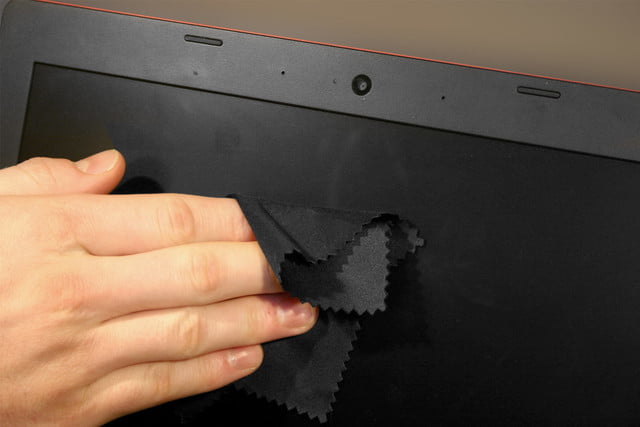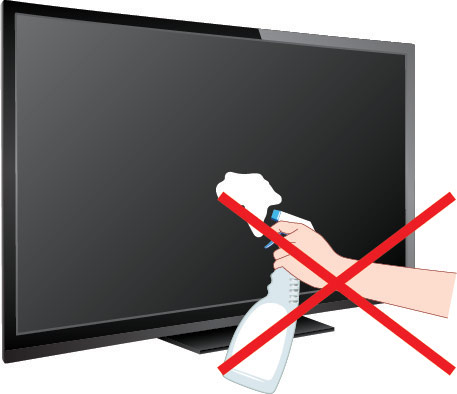Amidst the busy lives that we are juggling with, some of us have got quite acquainted with the streaks/ fingerprints on our display screens, especially that of laptops. But you might not realise that those streaks have the capability to minimise your work output. We, at Actis certainly wouldn’t want that to happen to you. You certainly wouldn’t want that to happen to yourself, do you?
Not only laptops but also the precious home theatre systems and other electronics tend to get impacted by dust very easily. And if the conversation is about electronic equipment in a country like India where dust pollution is in abundance and air-conditioned environments are limited, it’s best to learn a few tips on quick and easy cleaning.
8 easy ways to clean your flat screen TVs and displays the right way
Along with knowing a few tips and tricks, being aware of the Dos and Don’ts of the cleaning process is just as important. We’ll help you understand both. The guidelines elaborated below are applicable for LCD, LED-backlit LCD, laptop, tablet screen, smartphone, Plasma TV or even eBook readers.
1. Turn OFF the device
Maintain it as a practice to turn off the power button before initiating the cleaning process. Also, when the device is off, the screen is dark which makes it easier to spot the dirt or areas which sport oil or finger streaks. Turning the device off also prevents you from accidentally pressing unwanted buttons. This happens a lot when cleaning touchscreen devices such as tablets, smartphones, and iPads, etc (*we know you can resonate*)
2. Prefer using a microfiber cloth or a dry eraser

In order to maintain the durability and the look of your device, we would suggest you to always use a microfiber cloth while wiping the screen. Using toilet paper, paper towels, tissue paper, or any other cloth will result in creating unwanted marks on the screen. Avoid synthetic material at all costs as the scratch marks that they end up creating are not repairable.
3. Be gentle while scrubbing stubborn stains
If the dry cloth did not completely remove the dirt or stain, do not try to press harder in an attempt to scrub it off. Try to keep calm because pushing directly against the screen can often cause pixels to burn out. Try dampening the cloth with distilled water to get rid of the stain. For extremely stubborn stains, dampen the cloth with an equal ratio of distilled water to white vinegar.
4. Consider cleaning plastic edges and bezels around the screen too
The plastic edge or bezels around the screen are just as important and can be wiped with any multipurpose cleaner. However, it’s best to spray the cleaning liquid on the cloth first to avoid any spillage on to the flat-panel of the display device.
5. Refrain from using strong cleaning products to prevent discoloration of the screen
Avoid using strong cleaning products that contain ammonia, ethyl alcohol, toluene, paint solvents, acetone or ethyl acetate to clean the display. This can severely damage the sensitive anti-glare coating. These chemicals can react with the materials that the display is made of or coated wit. This could permanently discolor the screen or cause other kinds of damage.
6. Dilute your cleaning product
Maintain it as a practice to dilute your cleaning product as most of them are usually highly concentrated. Further, use the solution to clear stubborn smudges on your computer/electronic device.
7. A big NO to spraying directly on the panel

Never spray liquid directly onto the screen. It could leak into the device and cause damage. Always apply the cleaning solution directly onto the cloth and then wipe from there.
8. Freeze your wiping direction
Wipe in one direction. Using circular motion could spread the stain to areas that weren’t stained in the first place. Use a single motion in the same direction.
You’re all set! No more smudgy, streaky distractions!
If you are still not sure about the cleaning process of your display, you could peruse the user manual or get in touch with the manufacturer for any special instructions.
We hope you find these tips useful. Did we miss anything? Or, do you have any tips cleaning new-age displays? If so, please use the comment section below to share your tips, tricks, and ideas.
For more information on how to clean your LCD/LED Monitor or TV screen,
Contact Actis at 022-30808080 or at contact@actis.co.in.


